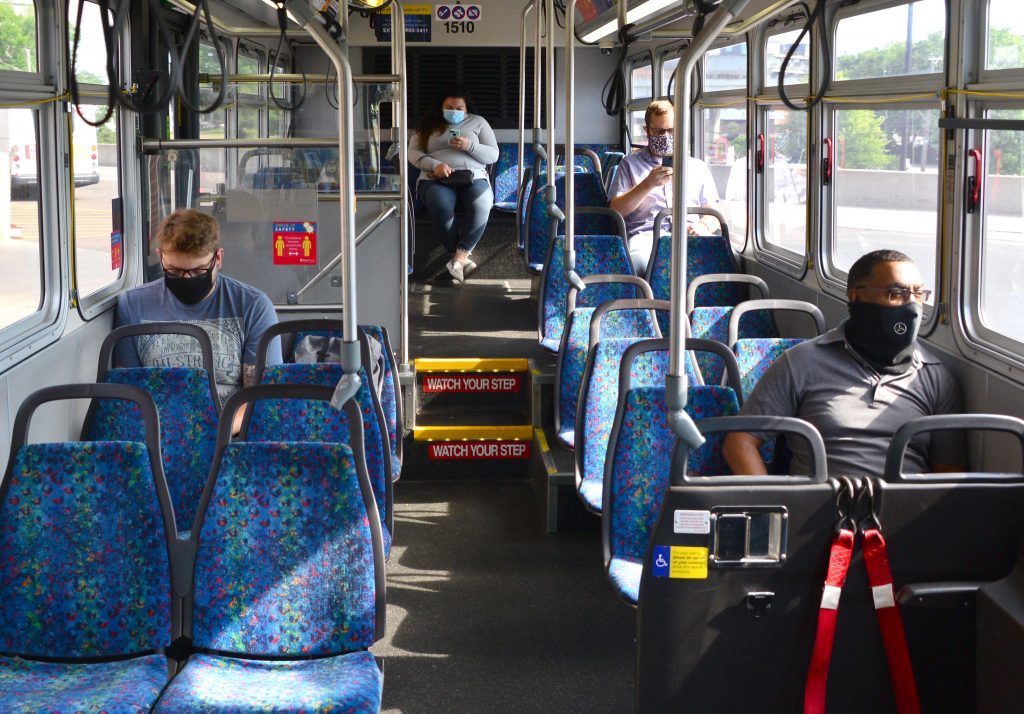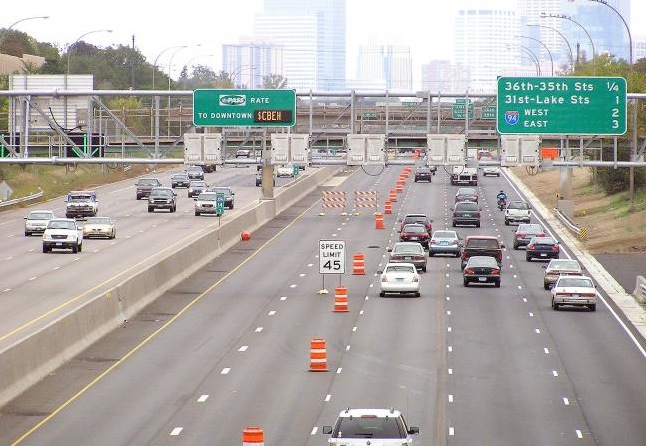
Smarter transportation case study #6: Managed lanes with peak-period transit discounts in Minneapolis
In Minneapolis, priority lanes and differential pricing have cleared a key interstate during peak hours and allowed more com- muters to utilize public transit.
The Twin Cities Metropolitan Area is using innovative solutions to relieve congestion on major highways in the region, with a particular focus on Interstate 35. The effort, part of a Minnesota Urban Partnership Agreement (UPA), utilizes a suite of intelligent transportation approaches, sometimes known as the 4Ts: Tolling, Transit, Telecommuting/Travel Demand Management and Technology.
The Minnesota UPA involves ITS technologies like real-time traffic and transit information, transit signal priority, and guidance mechanisms for shoulder-running buses. These technologies will significantly reduce travel time for riders.
“Trip time will be about half an hour. We’ll offer six trips in the morning and six trips home in the afternoon,” Bob Gibbons, a spokesman for Metro Transit, told Minnesota Public Radio.
First, the city is converting existing bus-only shoulder lanes and High Occupancy Vehicle (HOV) lanes along portions of the Interstate into wider lanes with prices that vary based on occupancy. Cars with only one occupant will have to pay a toll to access the lanes during peak hours, with prices set to ensure free-flowing travel. City officials say this will enable bus speeds to increase to 50 mph from the current bus-only shoulder lane speeds of 35 mph or less.
Second, a portion of the toll revenues from the new lanes will fund significant fare discounts for transit riders taking trips using the new facilities during peak periods. In and around the I-35W corridor, transit services will increase and a bus rapid transit network will be created, utilizing at least 27 newly purchased transit vehicles. There are also plans for six new park-and-ride lots with more than 1,400 additional spaces.
Third, new dynamic message signs and some existing signs will inform travelers about the availability of the lanes for non-bus use, toll rates for when the lanes are available, travel speeds on priced lanes versus on general-purpose lanes and transit alternatives.
The final element of the Minnesota UPA is telecommuting. This locally funded effort will focus on expanding upon the successful Results-Only Work Environment program, in which employers agree to provide employees the flexibility to telecommute or shift their hours to avoid congested commutes. Approximately 75 percent of Best Buy’s 4,500 corporate office employees participate in ROWE. Officials are targeting large employers, including the 20 Fortune 500 companies in the region, for participation, with the goal of reducing 500 daily peak-period trips throughout the corridor.
For More Information: Minnesota Public Radio

The MnPASS or congestion pricing lane on the left will be available at no cost to buses, car pools and to single driver vehicles willing to pay as little as 25 cents or up to $8 a trip depending on traffic levels. Traffic managers adjust the price in order to keep the lane flowing at 50 miles per hour. Photo by Dan Olson, Minnesota Public Radio
—-
Editor’s Note: Our new report on smarter mobility demonstrates how existing and emerging technologies can squeeze more capacity from over-burdened highways, help commuters avoid traffic delays and expand and improve transportation options, all while saving money and creating jobs. Many of these smart transportation solutions are already fueling innovation throughout the country, through both the public and private sector. These 14 case studies from around the U.S. and the world demonstrate the community benefits smart mobility solutions are giving regions, cities, and businesses.






